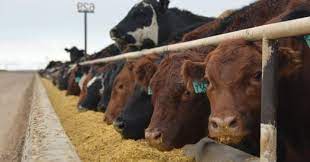Andrew Griffith, Extension ag economist with the University of Tennessee, says for every action, there is an equal and opposite reaction.
“For anyone in the cattle industry who thinks it would be good for cattle prices to reach the level the futures market is pricing for feeder cattle in late summer and fall, please do not whine or complain when the market price does a 180-degree turn and is terrible for a time,” he says in his weekly market outlook. “There is no reason to say the prices represented on the futures market are not attainable. However, if cash prices reach such a level in today’s economic environment, it will likely do more harm to cattle industry participants than good over the next five to eight years.”
Griffith is concerned about a repeat of the 2016-18 period, which followed strong cattle prices in 2014 and 2015.
“How many people want two really good years followed by three not so good years?” he says. “There certainly will be some who prefer this, but most cattle producers would prefer a stable market that provides a respectable profit per head produced.
“There is no way to predict what cattle prices will look like in five years, but the price levels being anticipated the next 12 months scream and shout herd expansion at as fast of a rate as possible. A moderate growth speed would support prices for a longer period while a rapid growth speed will drive prices into the pits of despair as supply increases rapidly in three years.”
Finished cattle prices continue to increase, providing cattle feeders with a healthy marketing check.
“Prices in the South proved to be extremely strong as packers are competing a little more for those cattle. The weekly 5-area average price will certainly set a new record high as prices exceeded those received in the middle of April,” Griffith says. “Many industry watchers thought hitting $170 was going to be tough earlier in the year, but now the market has surpassed $180.”
“Frankly, that price level seems a little high, but this market could keep pushing higher given the supply issue. Higher prices are always received with enthusiasm, but exorbitantly higher prices can result in longer-term negative consequences. The market will wait and see.”















